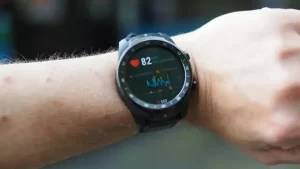CDC: Adenovirus may be behind unexplained childhood hepatitis
- Statins Lower Blood Lipids: How Long is a Course?
- Warning: Smartwatch Blood Sugar Measurement Deemed Dangerous
- Mifepristone: A Safe and Effective Abortion Option Amidst Controversy
- Asbestos Detected in Buildings Damaged in Ukraine: Analyzed by Japanese Company
- New Ocrevus Subcutaneous Injection Therapy Shows Promising Results in Multiple Sclerosis Treatmen
- Dutch Man Infected with COVID-19 for 613 Days Dies: Accumulating Over 50 Virus Mutations
CDC: Adenovirus may be behind unexplained childhood hepatitis
- Red Yeast Rice Scare Grips Japan: Over 114 Hospitalized and 5 Deaths
- Long COVID Brain Fog: Blood-Brain Barrier Damage and Persistent Inflammation
- FDA has mandated a top-level black box warning for all marketed CAR-T therapies
- Can people with high blood pressure eat peanuts?
- What is the difference between dopamine and dobutamine?
- How long can the patient live after heart stent surgery?
CDC: Adenovirus may be behind unexplained childhood hepatitis.
On March 31, 2022, five children with severe hepatitis of unknown cause were first reported in Scotland, UK.
Since then, more than 160 cases of childhood hepatitis of unknown cause have been reported in many countries, ranging from 1 month old to 16 years old.
The clinical manifestations of these unexplained childhood hepatitis are acute hepatitis , and many patients have received liver transplantation, and there have been deaths.
However, the exact cause remains unclear, and hepatitis A, B, C, D, and E were ruled out in all patients .
In addition, all patients in the UK have not been vaccinated against the COVID-19, so the cause of the COVID-19 vaccine can also be ruled out.
On April 29, the U.S. Centers for Disease Control and Prevention released a report showing that nine young children in Alabama had unexplained hepatitis, and they all tested positive for the common pathogen adenovirus 41 .

Adenovirus infection may be the cause of these unexplained childhood hepatitis, but other potential environmental factors are still under investigation, the CDC said in the report .
Infection with adenovirus 41 usually causes gastroenteritis in children and is generally not thought to cause symptoms of hepatitis in healthy children.
However, in immunocompromised children, adenovirus 41 infection may cause hepatitis, which may be an underappreciated factor in liver damage in healthy children, but requires further investigation.
Existing tests have ruled out hepatitis A, B, C, D, and E , as well as autoimmune hepatitis and Wilson’s disease , a genetic disorder that causes liver damage .
Nine patients in Alabama occurred between October 2021 and February 2022, three of whom developed acute liver failure and two of whom underwent liver transplants.
Currently, all patients have recovered or are recovering, including two liver transplant patients.
Adenovirus 41 was detected in all 9 patients , and Epstein-Barr virus was detected in 6 patients .
It is estimated that Epstein-Barr virus is latent in 95% of people. Antibodies are detected, indicating that EBV is latent and not active.

Before hospitalization, most of the nine patients developed symptoms of vomiting and diarrhea, and some patients developed upper respiratory symptoms.
During hospitalization, most patients had yellow eyes and skin and enlarged livers.
In addition to the nine pediatric patients in Alabama, Wisconsin also reported four pediatric patients, two in serious condition, one requiring a liver transplant, and one who has died.
Related cases have also been reported in Illinois and other places.
There are more than 50 types of adenoviruses, which typically cause symptoms such as colds and can be spread through close contact, respiratory droplets, and surfaces.
The CDC has issued a health alert alerting doctors and local health departments to such cases.
Parents and caregivers are advised to take precautions such as maintaining hand hygiene, avoiding contact with people who are sick, and covering coughs and sneezes to avoid contact with eyes, nose and mouth.
Reference:
https://www.cdc.gov/mmwr/volumes/71/wr/pdfs/mm7118e1-H.pdf
CDC: Adenovirus may be behind unexplained childhood hepatitis
(source:internet, reference only)
Disclaimer of medicaltrend.org
Important Note: The information provided is for informational purposes only and should not be considered as medical advice.



